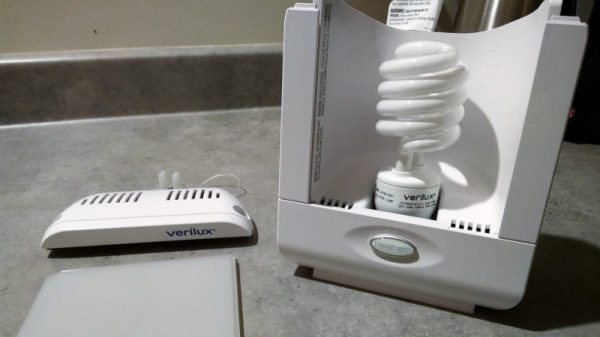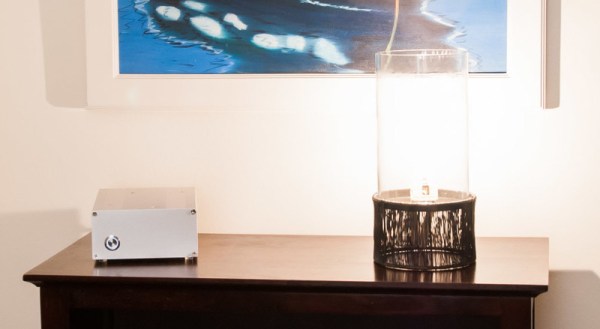Here in the northern hemisphere, winter has wrapped us in her monochromatic prison. A solid deck of gray clouds means you need a clock to tell the difference between night and day, and by about the first week of February, it gets to feeling like you’ll never see a blue sky again. It’s depressing, to be honest, and the lack of sunlight can even lead to a mood disorder known as SAD, or seasonal affective disorder.
SAD therapy is deceptively simple — bright full-spectrum light, and lots of it, to simulate the sun and stimulate the lizard brain within us. Not surprisingly, such lights are available commercially, but when [Justin Lam] bought one to help with his Vancouver blues, he decided to analyze the lamp’s output to determine whether the $70 he spent paid for therapy or marketing.
 The initial teardown was not encouraging, with what appeared to be a standard CFL “curly fry” light with a proprietary base in a fancy plastic enclosure. With access to a spectrometer, [Justin] confirmed that not only does the SAD light have exactly the same spectrum as a regular CFL, the diffuser touted to provide “full UV protection” does so simply by attenuating the entire spectrum evenly so that the UV exposure falls below the standards. In short, he found that the lamp was $70 worth of marketing wrapped around a $1.50 CFL. Caveat emptor.
The initial teardown was not encouraging, with what appeared to be a standard CFL “curly fry” light with a proprietary base in a fancy plastic enclosure. With access to a spectrometer, [Justin] confirmed that not only does the SAD light have exactly the same spectrum as a regular CFL, the diffuser touted to provide “full UV protection” does so simply by attenuating the entire spectrum evenly so that the UV exposure falls below the standards. In short, he found that the lamp was $70 worth of marketing wrapped around a $1.50 CFL. Caveat emptor.
Hats off to [Justin] for revealing the truth behind the hype, and here’s hoping he finds a way to ameliorate his current SAD situation. Perhaps one of these DIY lamps will be effective without the gouging.














